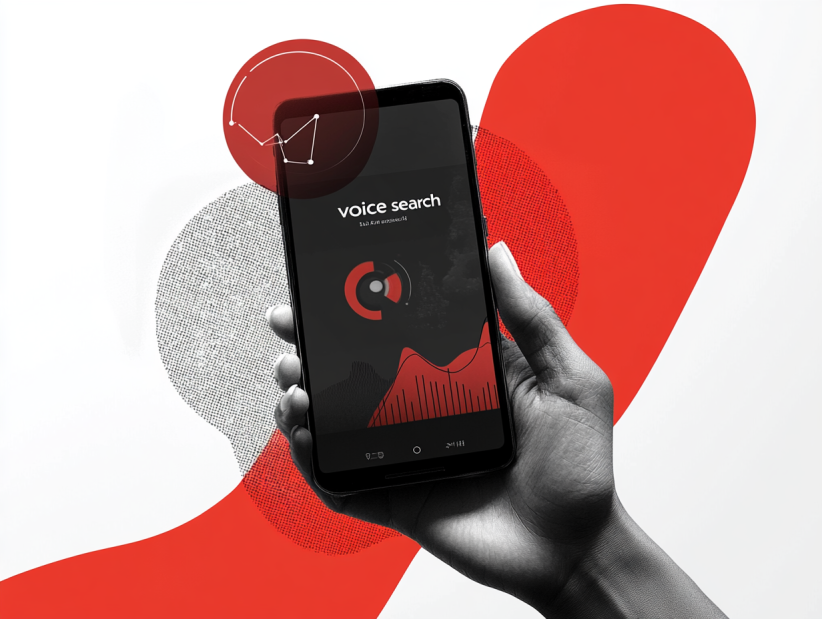In an era where voice search is reshaping the way people interact with the internet, businesses must adapt their Google Ads strategies to stay competitive. With predictions that voice search will account for more than 50% of all searches by 2024, optimizing your campaigns is crucial for maintaining visibility and relevance. This comprehensive guide outlines practical steps to optimize Google Ads for voice search, helping you reach a wider audience and enhance the effectiveness of your ad campaigns.
Table of Contents
Voice Search in 2024: Why It Matters More Than Ever

The growing popularity of voice-activated devices like Google Assistant, Siri, and Alexa has fundamentally changed the search landscape. In 2024, voice search is no longer a futuristic trend—it’s a major part of how users search for information. Understanding its significance is crucial to optimizing your Google Ads strategy.
The Shift from Typing to Talking
Unlike text searches, voice searches are conversational, reflecting natural speech patterns. People ask questions in full sentences, often with an intent to take immediate action. This creates an opportunity to capture highly motivated users, but only if your Google Ads campaigns are tailored to meet the unique demands of voice search queries.
User Intent: More Than Just Keywords
Many voice searches are made on-the-go, involving local intent or specific queries requiring immediate answers. As a result, it’s vital to focus not only on keywords but also on understanding the user’s intent, offering solutions that match what they’re looking for in real time.
Optimizing Your Ad Copy: Writing for Real Conversations
Reshaping your Google Ads copy to match the way people speak, not the way they type. Crafting conversational, engaging ad copy can significantly improve how your ads perform in voice search.
Embrace the Power of Long-Tail Keywords
Voice searches are longer and more specific than traditional keyword searches. Rather than focusing on short keywords like “cheap shoes,” a user might ask, “Where can I find affordable shoes for hiking in my area?” Targeting these long-tail keywords allows you to appear in more relevant searches.
- Expand Keyword Research: Use tools like Google Keyword Planner or AnswerThePublic to uncover the natural, question-based phrases people are using.
- Integrate Question Words: They often start with question words like “who,” “what,” “when,” “where,” and “how.” Tailoring your ad copy to these queries can improve visibility. For example, instead of “plumber near me,” optimize for “Where can I find an emergency plumber near me?”
Humanize Your Ad Copy with Natural Phrasing
In 2024, You will need to sound less robotic and more like real human speech. Use conversational language in your ad copy to mirror the natural phrasing.
- Speak to the User: Address the user directly in your ads by using words like “you” and “your.” This makes the ad more engaging and relevant.
- Use Simple, Direct Language: Avoid overly complex sentences or industry jargon. Aim to answer the user’s question or provide a clear call to action as quickly and simply as possible.
Local Searches: Capitalizing on Voice Search’s Geo-Targeted Nature

One of the most common uses of voice search is to find local businesses or services. By optimizing your Google Ads for local queries, you can drive highly relevant traffic and improve your chances of converting.
Optimize for “Near Me” Searches
Many voice searches are location-specific, with phrases like “near me” or “in [city].” To capture this traffic, ensure your campaigns are aligned with users’ local intent.
- Geo-Targeted Keywords: Use location-based keywords in your ad copy to attract local searches. If you run a bakery in Los Angeles, optimize for queries like “Where can I get fresh pastries in Los Angeles?”
- Enable Location Extensions: Location extensions in Google Ads allow your address, phone number, and other business details to appear alongside your ad. This is crucial for voice searches that prioritize local results.
- Bid Higher for Local Keywords: To boost your visibility for local searches, consider increasing your bid for keywords related to your geographic area.
Utilize Hyperlocal Targeting for Greater Precision
Hyperlocal targeting can significantly improve your chances of appearing in results. This involves focusing on extremely specific geographic areas, such as certain neighborhoods or even street names, to ensure your ads reach users near your business.
- Set Up Radius Targeting: Use Google Ads’ radius targeting feature to specify a distance around your business in which you want your ads to appear. This can be useful for services like restaurants, where proximity is key.
- Create Separate Campaigns for Different Locations: If your business operates in multiple locations, consider creating separate ad campaigns tailored to each location. This allows you to customize your ad copy and keywords based on the specific needs of each area.
Zeroing in on Voice-Powered Devices: Optimizing for Smart Speakers and Assistants
Devices like Google Home, Amazon Echo, and Apple HomePod are becoming common household items. These voice-activated devices have their own ecosystems, and understanding how to optimize Google Ads for them can provide a competitive advantage.
Voice Assistants and Transactional Searches
Smart speakers are increasingly being used to perform tasks beyond simple information retrieval. Users are making reservations, purchasing products, and interacting with brands directly through voice commands. If you want to capture these users, you’ll need to tailor your ad campaigns accordingly.
- Create Ads with a Call to Action (CTA): Voice searches are more likely to be transactional, meaning users are often looking to complete a task quickly. Ensure your ads include clear CTAs like “Book now” or “Order online today.”
- Enable Voice Command Triggers: By using structured data and optimizing your website for voice command responses, you can increase the chances of your content being used in response to specific voice queries. This can help voice assistants “recommend” your services when users ask for them.
Smart Speakers and Voice Commerce
Voice commerce is on the rise, with users increasingly shopping via smart speakers. To capitalize on this trend, you’ll need to create voice search-friendly product ads that make it easy for users to buy through voice commands.
- Optimize for Google Shopping Ads: Ensure your products are available on Google Shopping, which is integrated with voice search. Voice assistants often pull information from Google Shopping when users ask where to buy certain items.
- Leverage Personalized Offers: Tailor your offers to voice shoppers by using dynamic remarketing to show ads for products users have previously searched for via voice. For instance, if someone searches for “best running shoes for women,” your ad can showcase specific models they’ve viewed or purchased before.
Voice Search SEO: Why Structured Data Is Your Best Friend
Optimizing your Google Ads for voice search goes beyond just tweaking ad copy. It also involves optimizing your website and ad landing pages for voice search queries, which is where structured data comes into play.
What Is Structured Data and Why Does It Matter?
Structured data helps search engines understand the content on your website better, making it easier for your site to be included in relevant search results. By implementing schema markup, you provide additional context to Google, improving your chances of appearing as a rich snippet in voice search results.
- Implement FAQ Schema: Frequently asked questions are a common trigger for voice searches. Adding FAQ schema to your landing pages allows Google to display direct answers to user queries in the form of rich results.
- Highlight Key Information with Local Business Schema: If you’re targeting local customers, use local business schema to highlight important details like your operating hours, services, and contact information. This will improve your visibility in location-based voice searches.
Featured Snippets: Your Path to the Top of Voice Search Results
A significant percentage of voice search results come from featured snippets—those short, concise answers that appear at the top of search results. Optimizing for these snippets can significantly boost your visibility in voice search.
- Optimize Content for Quick Answers: When creating landing pages, structure your content in a way that provides quick, direct answers to user queries. Use short paragraphs, bullet points, and lists to make your content easier for Google to extract.
- Target “Position Zero” with Your Google Ads: Adjust your ad campaigns to bid on long-tail, question-based keywords that are more likely to trigger featured snippets. This can help you secure the coveted “position zero” spot in voice search results.
Measuring Success: Tracking Your Voice Search Performance
After implementing these strategies, it’s important to track how well your Google Ads are performing. While traditional metrics like CTR and conversion rate still apply, you’ll also need to focus on new performance indicators specific to voice search.
Use Voice-Specific Metrics
To understand how your Google Ads are performing in voice search, look at voice-specific metrics, such as how many of your ad impressions are coming from voice-activated devices. Tools like Google Search Console can provide insights into voice search queries that are driving traffic to your site.
A/B Test for Voice Search Optimization
Testing different versions of your ads can help you determine what resonates most with voice search users. Try A/B testing different ad copy, keywords, and CTAs to see what yields the best results in those environments.
Conclusion: Staying Ahead in the Voice Search Era
As voice search continues to grow in popularity, optimizing your Google Ads campaigns to meet the demands of this technology is crucial for staying competitive in 2024. By focusing on conversational keywords, local searches, smart speakers, structured data, and voice-specific performance tracking, you can ensure your business remains at the forefront of digital marketing.
Voice search isn’t just a passing trend—it’s here to stay. Adapt your strategies now.
Still feeling overwhelmed?
Don’t worry; Ad Labz is here to help! As a certified Google Ads Agency, we have the expertise & experience to guide you through every stage of paid advertising. Setting up campaigns, crafting winning creatives, or navigating A/B testing – we’re your partner in growth!


